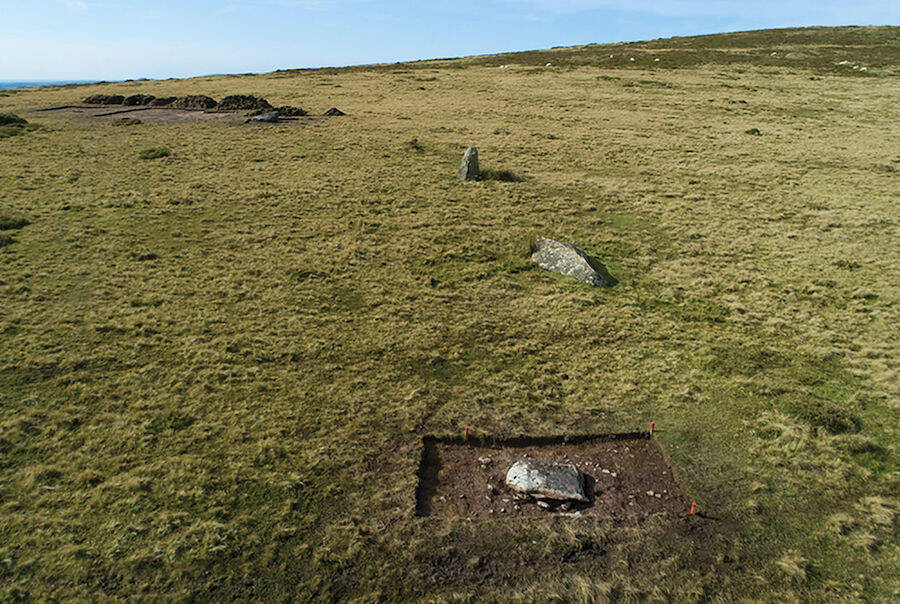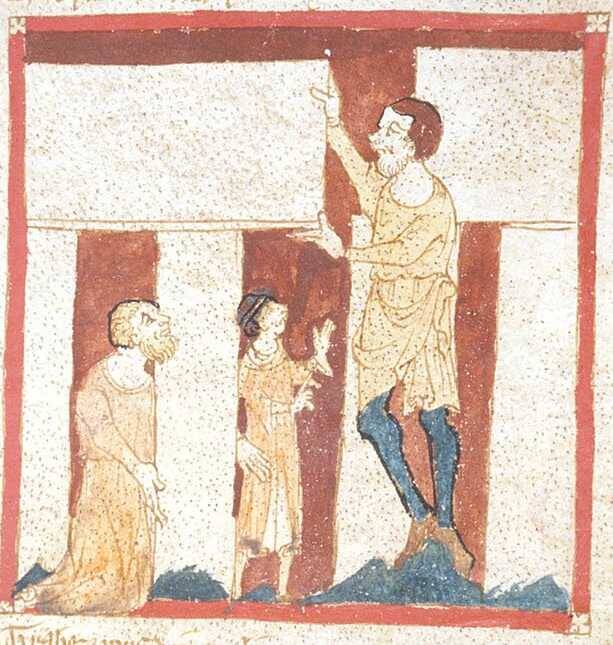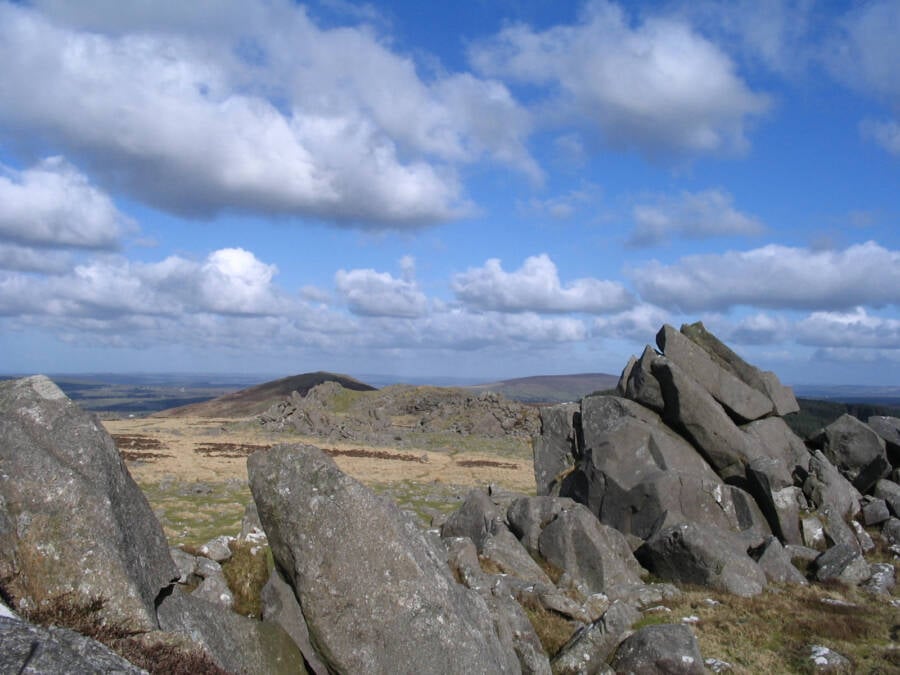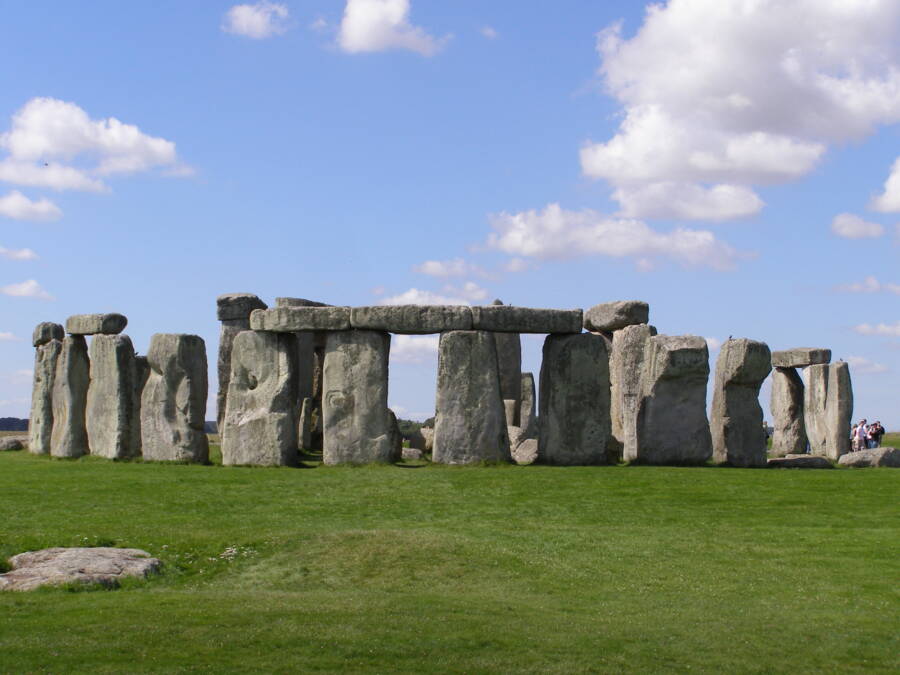According to researchers, the earliest version of Stonehenge was built in southwest Wales over 5,000 years ago.

A. Stanford/M. P. Pearson et. al./AntiquityThe prehistoric stone circle of Waun Mawn in Wales, which researchers believe is the “original” Stonehenge.
According to legend, the wizard Merlin helped move Stonehenge from Ireland to Salisbury Plain in England thousands of years ago. While this story has long been dismissed as a fantasy, at least one part might be true. Archaeologists have recently uncovered evidence that Stonehenge once stood at Waun Mawn in Wales — an area that was once Irish territory.
At Waun Mawn, researchers have discovered a series of buried stone-holes that follow a circle’s outline. The shapes of these holes have been linked to Stonehenge’s famous bluestone pillars. Notably, one bears an imprint that matches an especially “unusual” cross-section of a Stonehenge bluestone. And according to archaeologists, it would fit “like a key in a lock.”
“This is the culmination of 20 years of research,” raved Mike Parker Pearson, the University College London professor behind the find. “It’s one of the most important discoveries I’ve ever made.”

British LibraryLegend states that Merlin played a role in bringing Stonehenge from Ireland to England.
The first pieces of the puzzle were deciphered in 1923 when geologist Herbert Thomas found a link between Stonehenge and Wales. The spotted dolerite bluestones at Stonehenge — which was built in five stages over 1,500 years, beginning in 3000 B.C. — had originated in west Wales. These bluestones, Thomas said, came from the Preseli hills of Pembrokshire.
Thomas suspected that Stonehenge’s bluestones had originally formed a “venerated stone circle” in Wales. And in recent years, Parker Pearson and his team put that theory to the test. “We needed to find that original site,” Parker Pearson wrote. “So we set about searching for a Welsh stone circle that we could conclusively link to the stones on Salisbury Plain.”
In 2010, Parker Pearson and his team identified Waun Mawn as a potential site of interest. But after a year, magnetometer and earth-resistance surveys had led to nothing substantial. His team, Parker Pearson recalled, had “a terrible time” trying to find evidence of the original stone circle.
And so they simply explored other areas, leaving that site unexplored. “We concluded that since the instruments didn’t show us anything, there couldn’t be anything there,” Parker Pearson said. “A serious mistake.”

Wikimedia CommonsArchaeologists searched the Preseli hills in Wales for evidence of the original Stonehenge.
In the end, it took old-fashioned digging in the dirt. In 2017, the team returned to an arc of four stones at Waun Mawn, a site that the team had originally dismissed as “frankly unimpressive.”
Finally, their luck changed. “To everyone’s delight,” Parker Pearson wrote, “[we] discovered two empty stone-holes, one on each end of the arc of stones, where missing stones had once stood.” As they continued to dig, the team unearthed even more stone-holes in the area.
But was this truly the original site of Stonehenge? To find out, Parker Pearson and his team needed to prove that the original stone circle had been erected and dismantled before 3000 B.C. — when the construction of Stonehenge in Salisbury Plain began.
First, they dated the soil by measuring its last exposure to sunlight. Check — the circle at Waun Mawn was constructed before Stonehenge. Next, they analyzed a rock chip found in one of the stone-holes — and it ended up matching with a rock type represented by three stones at Stonehenge.
Finally, they discovered an imprint in the soil left by the bottom of the original pillar. That stone had an “unusual pentagonal cross-section.” A computer confirmed that this imprint perfectly matched one of the Stonehenge stones — “like a key in a lock.”
What’s more, the circle of stones at Waun Mawn matched the diameter of the ditch that encloses Stonehenge. And, like Stonehenge, the Waun Mawn circle was built to align on the midsummer solstice sunrise.
“This really is the most exciting thing we’ve ever found,” Parker Pearson said.

Wikimedia CommonsMystery has long surrounded the legendary Stonehenge in England.
As for the tale of Merlin and Stonehenge, that was first established by the medieval author Geoffrey of Monmouth. In his 1136 book, History of the Kings of Britain, Geoffrey describes how Merlin dismantled a stone circle called Giants’ Dance in Ireland in order to get his hands on the stones’ magical healing properties.
And at some point after that, a group of men shipped the stones to England so they could build a monument to commemorate the deaths of Britons killed by Saxons during peace talks at Amesbury.
Geoffrey’s account has long been dismissed as a total myth — especially since he got historical facts wrong (including the time when the Saxons arrived). But Parker Pearson’s discovery suggests that the medieval author may have gotten at least a couple things right.
“My word, it’s tempting to believe it,” said Parker Pearson. “We may well have just found what Geoffrey called the Giants’ Dance.”
The discovery leaves one question: Why move the stone circle at all? Ramilisonina, an archaeologist from Madagascar who worked with Parker Pearson’s team, believes it had to do with the cycle of life and death. The stones of Stonehenge, durable and strong, may have represented the memories of dead ancestors.
As for any other mysteries that Stonehenge may hold? Parker Pearson is certain that there are many. An estimated 80 bluestones can be found in Salisbury Plain, which leads Parker Pearson to speculate that the stones of Waun Mawn were not the only stones used to build Stonehenge.
“Maybe there are more in Preseli waiting to be found,” he said. “Who knows? Someone will be lucky enough to find them.”
After reading about the “original” Stonehenge, learn about 9 of the world’s oldest structures. Then, check out Gobekli Tepe, a temple that predates Stonehenge by 6,000 years.





